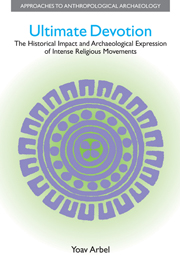 Ultimate Devotion
Ultimate Devotion from Part I
For nearly a century, the Tambaran cult had been the artery of life for Ilahita, a large village in northern Papua New Guinea. In 1984, everything suddenly changed. In the course of a dramatic iconoclastic spell, Ilahita's men violated a fundamental taboo of Tambaran by disclosing its secrets to the women and shattering its revered ritual paraphernalia. A belief system that had provided spiritual guidance and social solidarity for several generations had thus been contemptuously purged. Donald Tuzin (1997: 33), who spent several years studying Ilahita, observes that with the fall of Tambaran
the traditional grounds of male solidarity and association were obliterated…without all of the ancillary topics and projects [that Tambaran] gave men to talk about, without the stimulating need to coordinate competitions and displays, without even the companionable sharing of betel nut and tobacco, male society quickly declined. Without the cover of secrecy, without the protection of the Tambaran's canopy, masculinity as the Ilahita had known it for a hundred years could not continue…so when it died, masculine identity, purpose, and agency died with it.
It seems remarkable that members of a community would ruthlessly dispose of their own sacro-sanct spiritual symbols. Yet, the fate of Tambaran reflects the adaptability of religion to changing circumstances, a quality responsible to a large degree for its perseverance and vibrancy from pre-historic days to the present.
To save this book to your Kindle, first ensure [email protected] is added to your Approved Personal Document E-mail List under your Personal Document Settings on the Manage Your Content and Devices page of your Amazon account. Then enter the ‘name’ part of your Kindle email address below. Find out more about saving to your Kindle.
Note you can select to save to either the @free.kindle.com or @kindle.com variations. ‘@free.kindle.com’ emails are free but can only be saved to your device when it is connected to wi-fi. ‘@kindle.com’ emails can be delivered even when you are not connected to wi-fi, but note that service fees apply.
Find out more about the Kindle Personal Document Service.
To save content items to your account, please confirm that you agree to abide by our usage policies. If this is the first time you use this feature, you will be asked to authorise Cambridge Core to connect with your account. Find out more about saving content to Dropbox.
To save content items to your account, please confirm that you agree to abide by our usage policies. If this is the first time you use this feature, you will be asked to authorise Cambridge Core to connect with your account. Find out more about saving content to Google Drive.